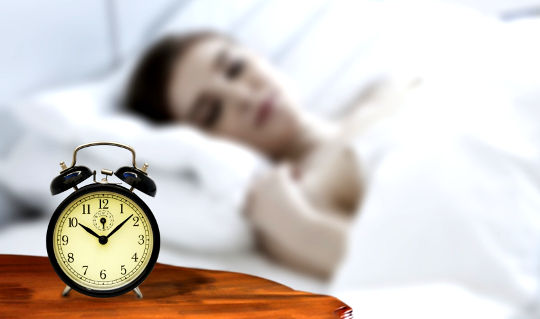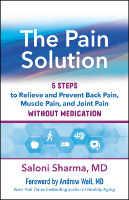
Image by Tumisu
Myth: Sleep quality is nt connected to orthopaedic pain.
Fact: Poor sleep worsens pain.
Relief: Optimizing sleep is part of a pain solution.
The rest less, work more attitude pervades America. Skimping on sleep promises us more time, but instead it leaves us feeling unproductive and unhealthy. All-nighters, minimal sleep, and long work hours are applauded as signs of dedication among students, parents, and employees. Yet less sleep hurts us and causes more hurt. It erodes health, breeds painful inflammation, and shortens lifespan.
There are no substitutes for sleep. Skimping on sleep is akin to eating processed convenience food instead of real, nutritious food: it may feel okay in the short run, but we pay for it in the long run. Just as real food provides nutrients essential for life, sufficient sleep provides the recovery time essential to the healthy functioning of our body and brain.
Many employers — in fields ranging from law to long-distance truck driving — promote the “rest less, work more” philosophy instead of a “rest better, work better” philosophy. This leads to poorer focus, more mistakes, extra work, and damaged health.
Get The Latest By Email
A 2020 study found that sleep deprivation can result in greater impairment than having a blood alcohol concentration over the legal driving limit. Like alcohol, too, it impairs our judgment: the same study found that drinking coffee tricked people into thinking they were more alert and less impaired than they truly were.
Sleep Builds Health
Sleep allows the body to recharge and reset. It restores homeostasis (balance) and calms inflammation. Poor-quality or inadequate sleep contributes to pain, inflammation, a weakened immune system, diabetes, hypertension, heart disease, and some cancers. It feeds depression, anxiety, and other psychological disorders while decreasing focus, attention span, and memory. Poor sleep stresses the body.
Recent studies suggest that insufficient sleep actually shrinks your brain: people with poor sleep quality have more cortical atrophy. Insufficient sleep decreases resilience and the ability to process and tolerate pain.
Sleep deprivation leads to myriad health consequences, such as:
-
increased pain
-
increased inflammation
-
increased stress
-
increased fatigue
-
decreased pain tolerance
-
decreased focus
-
decreased memory
-
decreased brain volume
-
decreased immune function
-
prediabetes and diabetes
-
high blood pressure
-
heart disease
-
mental health conditions, including depression and anxiety
-
shorter healthspan
-
shorter lifespan
Sleep and Inflammation
Most people know that adults typically need seven to eight hours of restorative sleep to function at their best. Shorter sleep durations (less than six hours) are correlated with higher levels of inflammation (as measured by levels of IL-6, TNF-α, and CRP). Extra fat acts as an inflammation factory and according to a thirteen-year study, shorter sleep duration is also associated with obesity. It is a double whammy.
The quality of our sleep matters, too. Shallow, frequently interrupted sleep is less beneficial. A 2020 study published in the Journal of the American Medical Association found that insufficient deep sleep is associated with a greater risk of premature death. Sufficient quality sleep is a simple, drug-free way to quell pain, reduce inflammation, and extend healthspan.
Sleep and Pain
Pain and sleep difficulties are intertwined. Pain can disrupt sleep as a result of difficulties in finding a comfortable sleeping position or experiencing pain when rolling over. Sleep can also be affected by elevated stress hormones, anxiety, and depression. In a study of people sent to pain physicians, 70 percent described their sleep as poor and reported fewer sleep hours, greater disability, higher pain levels, less daytime activity, and higher depression and anxiety scores.
Poor sleep is also documented among people with rheumatoid arthritis, osteoarthritis, fibromyalgia, headaches, and other painful conditions. Even in people with and without diagnosed painful conditions, there is a clear connection between poor sleep and pain. A study of more than seventeen thousand adults found that sleeping for five hours or less per night is associated with more musculoskeletal pain.
Sleep deprivation, in turn, is known to lower pain tolerance. If you don’t get enough quality sleep, you hurt more. In one study, people who slept less for ten consecutive nights were found to have higher pain levels and higher inflammatory markers. People who slept less than five hours a night not only experienced more musculoskeletal pain but also had multiple painful areas. In other words, less sleep means more pain. Although catching up on sleep after nights of disrupted sleep is not optimal, it still provides better pain control than NSAIDs or acetaminophen. And unlike medications and stimulants, sleep is free and free of side effects.
Sleep and General Well-Being
If you sleep well, you are likely to make better food choices and not rely on sugar, caffeine, and processed foods to get you through the day. Recent studies show that a more diverse, healthy gut microbiome correlates with better sleep. Better sleep gives us more energy to be active, and daily movement improves sleep.
Quality sleep translates to less physical and mental stress as well as more resilience for coping with pain and difficult situations. In turn, reducing stress and focusing on positive relationships improves your sense of well-being and your sleep. All the relief factors interconnect.
Sleep and Hormones
Hormones are regulatory, signaling substances that help maintain homeostasis (balance) in the body. While many hormones affect sleep, we will focus on the five listed below.
-
Cortisol, the stress hormone, helps us wake up and be alert in the morning.
-
Melatonin relaxes us in preparation for sleep.
-
Leptin decreases appetite (makes us feel full).
-
Ghrelin increases appetite (makes us feel hungry).
-
Growth hormone aids in tissue repair and growth during sleep.
Our circadian rhythm rules the natural sleep-wake cycle. We want to program our internal clocks to maximize quality sleep and healing time. Exposure to natural light in the morning is best, if possible. Bright light not only triggers the release of cortisol but also triggers a melatonin surge fourteen to sixteen hours later. This coincides with the fading of natural daylight. In the evening, it is better to follow this pattern and use dimmer light and desk lamps as opposed to bright, overhead lighting.
Unfortunately, screen use before bedtime disrupts the release of melatonin, leading to poorer sleep and recovery. As melatonin levels increases, our cortisol levels should decrease. However, lingering stress from the day or stressful entertainment, news or conversations close to bedtime can elevate cortisol levels. A relaxation routine helps us ride the melatonin wave and unwind in preparation for sleep.
Insufficient sleep creates a hormonal downward spiral by raising cortisol levels, thereby increasing inflammation, pain, dis-ease, and other stress responses. In addition, cortisol lowers our levels of leptin, the hormone that helps regulate appetite by making us feel full, and increases levels of ghrelin, the hunger hormone. This disruption of the hormones that influence when and how much we eat may explain the documented correlation between poor sleep and higher body weight. This all leads to more eating, more fatty inflammatory tissue, and more painful inflammation.
Growth hormone, primarily produced at night, plays an important role in food processing, maintenance of muscle mass, and bone health, as well as tissue repair and growth. Poor sleep disrupts growth hormone production. This translates to less healing, decreased muscle mass, and poorer bone health. All of these factors contribute to more pain and inflammation.
It makes sense. If we skimp on one kind of fuel (sleep), we attempt to compensate with another kind of fuel (food). But the two are not interchangeable. More food (even healthy food) is an inadequate remedy for insufficient sleep. Instead of providing the body with an opportunity to rest and recharge, we inundate it with more work in the forms of information processing and food metabolizing. Our body may be pleading, in the famous words of Nell Carter, “Gimme a break.”
Strategic Napping
Many of us try to catch up on sleep lost during the week by sleeping late on weekends and vacation days. But sleeping in does not recoup all the benefits of lost sleep. One study looking at people who slept less during the week and extra on the weekends showed that these people ate more food after dinner, increased their body weight, disrupted their circadian rhythm, and reduced their body’s insulin sensitivity.
The consequences of less weekday sleep are eating more food, gaining weight, increasing blood sugar, increasing inflammation, and disrupting your body’s natural rhythm. A schedule that allows for seven to nine hours of high-quality sleep is more beneficial than late rising on weekends.
Life happens, of course, and sleep may suffer. When that happens, to nap or to not nap? That is the question. The answer is: it depends. If you miss an hour or more of your night’s sleep, your mood and mental function may benefit from a nap, but keep a few guidelines in mind. Your goal is still to sleep for seven to nine hours in a twenty-four-hour period. Data suggest that excessive sleep can be detrimental, too. In addition, naps may disrupt your nighttime sleep.
Nap if you need to, but avoid napping late in the day (after 3 p.m.), and aim to nap for no more than twenty to thirty minutes. Skip the nap if you have trouble sleeping at night.
Unwinding: A Bedtime Relaxation Routine
If sleep is so important, does it make sense to take sleeping pills? Unfortunately, sleep medications often result in poorer sleep. They carry a risk of dependency, addiction, harmful side effects, and interactions with other medications or substances.
Let’s consider establishing a bedtime relaxation routine. We thrive on routines, and our bodies respond to cues synced with our circadian rhythm. Many parents sleep-train their children by establishing a regular bedtime routine that may include a bath, brushing teeth, and story time. Adults can benefit from a similar approach.
Common ways to improve sleep without medication focus on sleep hygiene, stimulus control, and limiting daytime napping. Sleep hygiene means improving our sleep habits by changing our attitudes toward sleep, practicing sleep-inducing behaviors, tracking our sleep, and avoiding stimulation before bedtime.
Stimulus control means treating our bed as a place associated only with sleep (and intimacy), not with eating, working, or watching television.
Creating a Low-Stress Zone
Your bedroom should make you feel calm, cool, and relaxed, not alert and wired. It should be a sanctuary that induces a sense of serenity and well-being, a place that cues your brain for sleep. This means, as much as possible, keeping work out of your bedroom. Even if you live in a studio apartment or shared room, avoid using your phone or laptop in bed.
To prepare for sleep, it is also important to avoid stimulating TV shows, stressful news, and tough conversations (in person or on the phone) at bedtime. Stress pumps up the fight-or-flight system and leaves you wired long after the discussion has ended. Try to make the last ninety minutes of your day drama-free time. This may not always be possible with children, spouses, roommates, and work commitments, but even if another person pushes your buttons, you can temper your response in order to support your bedtime relaxation routine.
Keep your bedroom cool, quiet, and dark — a sleep cave. While temperature preferences vary, try to keep your bedroom cool enough to make snuggling under a sheet or blanket inviting. If you share a bed, having your own cover sheet and blanket or duvet can avoid a nightly tug-of-war.
A fan can circulate cool air and provide some consistent white noise. If you can’t control the noise level, consider white noise or ear plugs. Similarly, keeping the room dark promotes better sleep.
If you live in a place with short summer nights or work a night shift, try blackout curtains or an eye mask. Make your sleep cave a relaxing, inviting sleep spot that helps you recover, recharge, and reduce pain.
Creating a Low-Electronic Zone
It’s not just the stimulating or stressful content brought to us by electronic devices that can interfere with bedtime relaxation; the blue light emitted by their screens has been shown to disrupt melatonin release. In an ideal world, we would ban electronics for ninety minutes before bedtime.
We can start by avoiding phones, screens, and other electronic devices for thirty minutes before bedtime. Many sleep experts recommend leaving your smartphone outside your bedroom. If you can do this and charge your phone overnight in another room, that is fantastic!
Many of us need to keep our phone handy in case of emergencies, and we also use it as our alarm clock. The second problem is easy to solve. An old-fashioned, inexpensive alarm clock will prevent middle-of-the-night time checks on a bright, stimulating phone screen and save you from pondering (if not opening) an email or other notification. If the light from a digital clock disturbs your sleep or the numbers hypnotize you, face the clock away from you. It will be there when you need it and is infinitely better than checking the time on your phone at night. Some digital clocks also offer soothing sounds to help you fall asleep.
If you cannot leave your phone in another room, it helps to put the phone on silent mode or airplane mode or even turn it off. If you use the phone to listen to a bedtime relaxation recording or white noise, place it at arm’s length or face down to remove it from immediate view.
If you cannot avoid screen use within ninety minutes of bedtime, consider wearing inexpensive amber-tinted glasses. These lenses block the blue light from screens so that melatonin can work its magic. In studies, people who wore amber lenses two hours before bedtime for only one week reported increases in sleep time, quality, and soundness. It is still important to try to designate the last thirty minutes before bedtime as screen-free time.
Avoiding “Revenge Bedtime Procrastination”
Another reason to avoid bedtime screen use is that it sets the stage for “revenge bedtime procrastination.” This nasty but widespread habit means staying up later and sacrificing sleep to do something leisurely that we feel cheated out of doing during the day. Often, this involves binge-watching shows, shopping, or scrolling through endless social media feeds. It provides a release of feel-good chemicals in our brains and feels like a well-deserved treat after a long day of working, taking care of others, and simply surviving.
Unfortunately, this “treat” dooms us to more stress, pain, and inflammation. To help remove this temptation, avoid screen use before bedtime and replace it with a nightly practice that truly nourishes you, leading to more rest and less stress.
Copyright 2022. All Rights Reserved.
Reprinted with permission of the publisher, New World Library.
BOOK: The Pain Solution
The Pain Solution: 5 Steps to Relieve and Prevent Back Pain, Muscle Pain, and Joint Pain without Medication
by Saloni Sharma MD LAc Discover a proven path to pain relief. With empathy and scientific savvy, pain expert Dr. Saloni Sharma offers a personalized and innovative five-step pain relief program built on what she calls microboosts, little steps that add up to big results. Her drug-free plan is more than just a road map to less pain. It is a guide to the greater joy, health, and well-being that every person deserves.
Discover a proven path to pain relief. With empathy and scientific savvy, pain expert Dr. Saloni Sharma offers a personalized and innovative five-step pain relief program built on what she calls microboosts, little steps that add up to big results. Her drug-free plan is more than just a road map to less pain. It is a guide to the greater joy, health, and well-being that every person deserves.
Illustrated with inspiring patient examples and personal stories.
For more info and/or to order this book, click here. Also available as an Audiobook and as a Kindle edition.
About the Author
 Saloni Sharma, MD, LAc, is double board-certified in pain management and rehabilitation medicine. She is the medical director and founder of the Orthopaedic Integrative Health Center at Rothman Orthopaedics in Philadelphia and has treated thousands of patients. As a nationally recognized pain expert, she serves as co-chair for pain management and spine rehabilitation for the American Academy of Physical Medicine and Rehabilitation and as a member of the national Opioid Task Force. She has directed national courses on opioid alternatives and regularly speaks and advocates for ways to manage pain without medication.
Saloni Sharma, MD, LAc, is double board-certified in pain management and rehabilitation medicine. She is the medical director and founder of the Orthopaedic Integrative Health Center at Rothman Orthopaedics in Philadelphia and has treated thousands of patients. As a nationally recognized pain expert, she serves as co-chair for pain management and spine rehabilitation for the American Academy of Physical Medicine and Rehabilitation and as a member of the national Opioid Task Force. She has directed national courses on opioid alternatives and regularly speaks and advocates for ways to manage pain without medication.
Dr. Sharma is a fellow of the Andrew Weil Center for Integrative Medicine and has studied functional medicine and lifestyle medicine. She completed her acupuncture training at Harvard Medical School. She has studied yoga and meditation at Parmarth Niketan in Rishikesh, India, and mindfulness at Thomas Jefferson University. Dr. Sharma completed Stanford University’s inaugural physician well-being director course.
Visit her website at SaloniSharmaMD.com/








